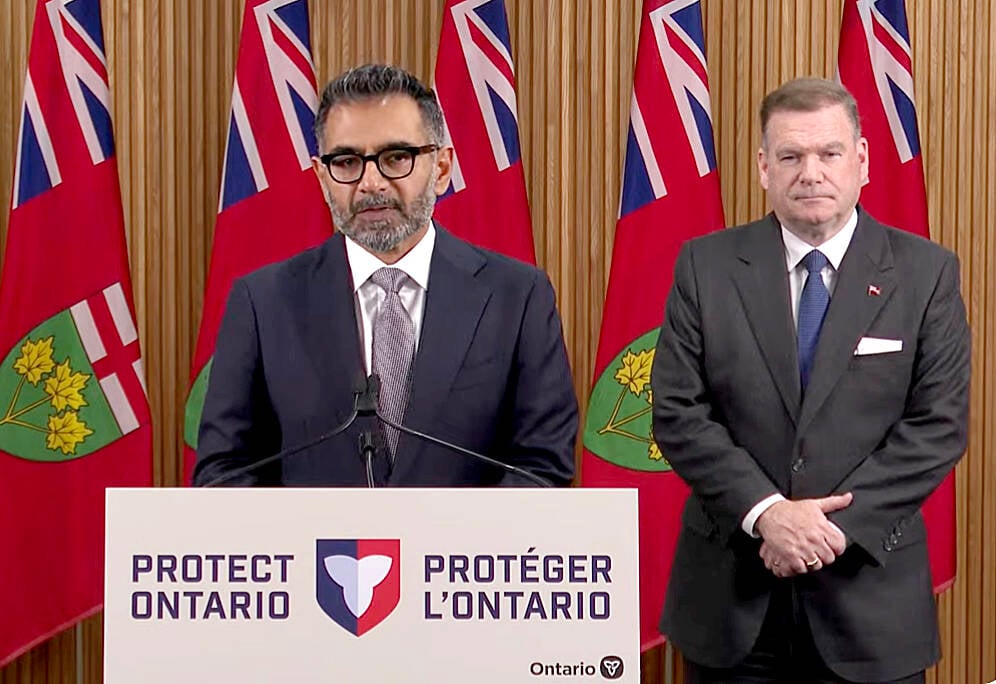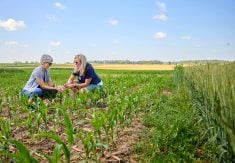We’re just at the start of being able to understand the extraordinarily complex problem of food waste.
A panel discussion at the Arrell Food Institute outlined just how much we need to figure out in order to reduce the vast amount of food that is thrown out in the world each year. In Canada it’s estimated that a third of the food that is produced is wasted.
Why it matters: It is estimated that the world wastes 1.3 billion tonnes of food worth $750 billion per year. The best routes to reducing that food waste are not yet known.
Read Also

Conservation Authorities to be amalgamated
Ontario’s plan to amalgamate Conservation Authorities into large regional jurisdictions raises concerns that political influences will replace science-based decision-making, impacting flood management and community support.
Kate Parizeau, an associate professor at the University of Guelph, went through a list of assumptions people make about being able to reduce food waste, none of which work all that well. They included:
Deliver it to a landfill for composting.
Issues: Green box programs (for organic waste) are much more expensive to run than programs for recycling or garbage. Large composting facilities release methane, a serious greenhouse gas.
Give the food we might otherwise waste to people in need.
Issue: Much of the food we waste is past being fit for consumption. You wouldn’t take that moldy melon on your counter to the food bank. Diverting food to charities is not the long-term solution, said Parizeau, as they are often run by volunteers and are not as efficient as putting the food directly in the hands of people who need it through the more efficient food system.
Use food waste industrially to produce energy. The challenge, says Parizeau, is that income from digesters isn’t assured. Large-scale digesters are capital intensive.
Feed it to animals. “Taking food out of a dumpster of a retailer and feeding to animals is not going to work,” said Parizeau. Some farm animals eat food from predicable food processing waste streams, but animals are fed very finely balanced rations.
Just dump it in a landfill, then at least it is controlled. There’s not much to make this option attractive.
Dr. Mike Van Massow, who was recently named Chair in Food Systems Leadership at the University of Guelph, said that the variability in how food is wasted is extraordinary. The amount of research on understanding food waste is growing.

“We need to talk about organic flows and where it’s coming from and where it is going. There are people who will define it differently.”
He said a vegetarian student argues grain feeding to livestock is food waste.
“I object, as a committed omnivore,” he said.
Von Massow has heard from those in the agriculture sector to keep in mind that reducing food waste could reduce the demand for food and the health of the sector.
There’s a lot of emotional attachment to food and food waste, said Von Massow.
Research is showing that there’s a lot of variability in what people and restaurants throw out.
Some people throw out nothing; others will throw out 20 kg per week. Averages are not helpful, he says, when there’s so much variability.
Restaurants also are highly variable in their food waste, but in different places. It’s not portion size that’s the issue either. Fine dining restaurants may have smaller portions, but the waste is earlier in the process when the food is trimmed to perfection.
“The truth is food waste in restaurants is likely as variable as it is in households,” said Von Massow.
Other researchers and food organization workers on the panel had other data to contribute to show the complexity of food waste.

Goretty Dias, of the school of environment, enterprise and development at the University of Waterloo presented research that raises questions about another recommended practice to reduce food waste in the home — meal planning. A Waterloo student did a study of food waste in the city with 70 households. Factors that led to food waste included:
- Over-purchasing in shopping.
- Not wanting to have an empty refrigerator even when all the food isn’t needed.
- The fact it is cheaper to buy larger volumes of some products than smaller volumes, even when the volume isn’t needed.
- The fact that meal planners wasted more food, supposedly because when the plan goes awry, food is wasted.
- Packaging didn’t have much effect.
Melanie Goodchild is working on her doctorate at the University of Waterloo, studying projects relating to aboriginal peoples and food.
People are missing the spiritual and emotional connection to food and that has meant more food waste, she said.
Study to look at food loss across entire food chain
Trying to find answers on the level of food waste is spawning some significant research projects.
A world-first project was recently launched by Value Chain Management International and Second Harvest, an Ontario organization that coordinates the distribution of excess food. The study is funded by the Walmart Foundation.
The goal of the study is to help all areas of the food chain from farms to retailers identify where food losses occur and then to figure out how to manage those food losses.
The study will:
- Calculate the total amount of food available for human consumption in Canada.
- Identify where, how and why waste occurs along the chain.
- Identify potential root-cause solutions to reduce the percentage of Canadian food sent to landfill – by proposing improved redistribution, reuse and recycling practices.
- Identify greater opportunities for food to be recovered and distributed to people who are food insecure.
- Culminate in the production and dissemination of a manual of scalable and sustainable solutions for addressing and preventing food waste.













